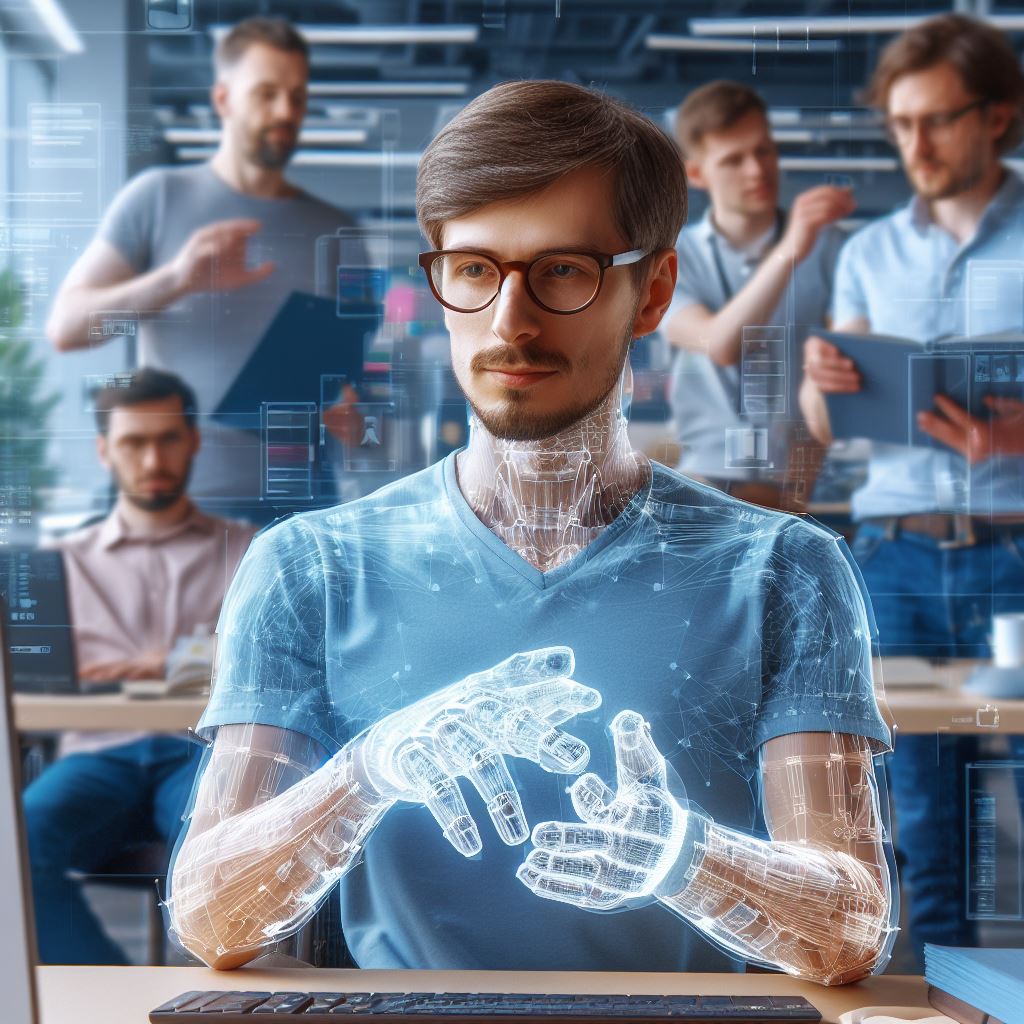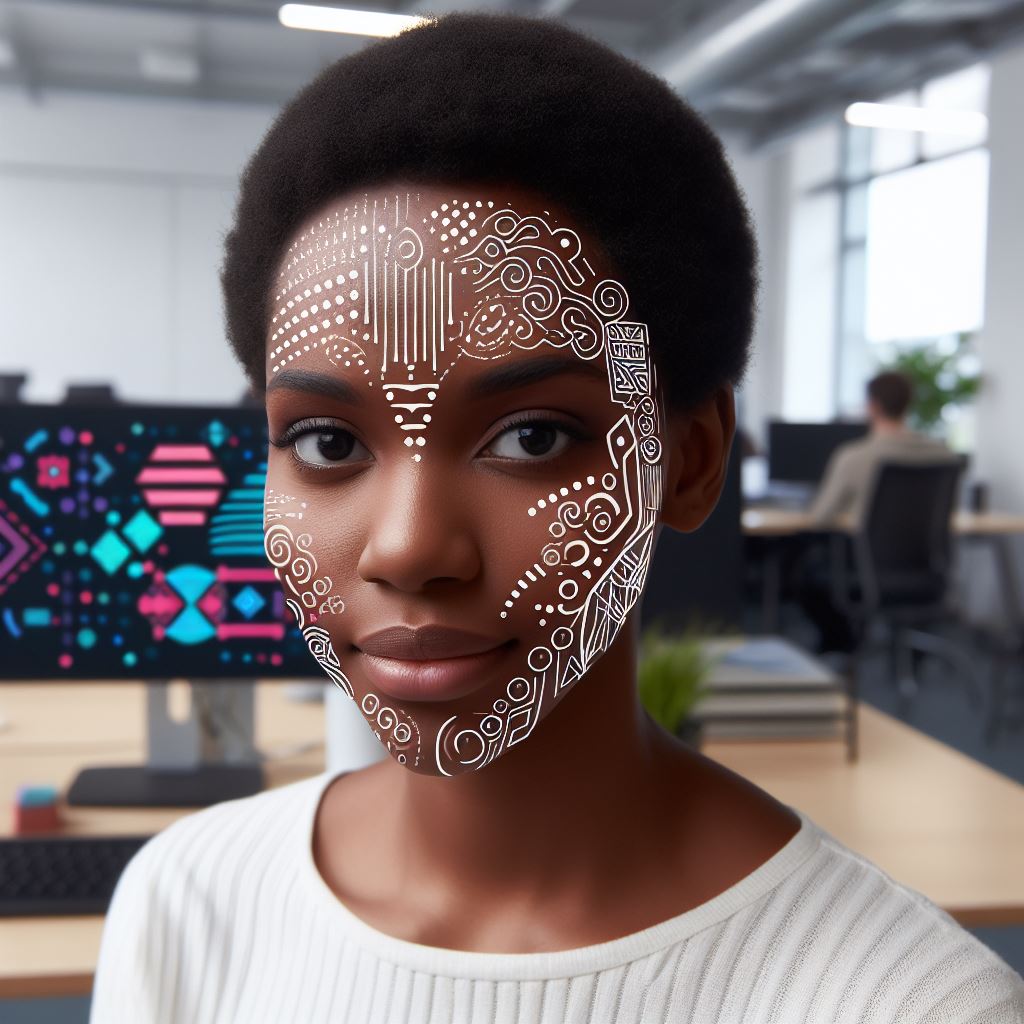Introduction
In the world of coding, Scratch Language stands out as an inspiring and innovative creation.
Scratch Language, developed at MIT, is a visual programming language designed to teach coding to beginners.
This blog post explores the inspiring story behind the creation of Scratch Language and its impact on coding education.
Hook:
In the vast realm of coding languages, there exists a beacon of innovation – the captivating narrative behind Scratch.
Brief Overview of Scratch Language:
- Born at MIT Media Lab.
- Designed for beginners.
- Empowers creativity through visual coding blocks.
- Facilitates interactive storytelling, games, and animations.
Thesis Statement:
Scratch’s origin story unfolds as a testament to the transformative power of simplifying coding for aspiring creators.
Background on Scratch Language
Definition and Purpose
Scratch, a visual programming language, empowers creativity by enabling users to create interactive stories, games, and animations.
Its primary purpose is to introduce coding concepts to beginners of all ages, nurturing a love for programming.
Developed by MIT Media Lab
Conceived at the renowned MIT Media Lab, Scratch was the brainchild of Mitchel Resnick and his team.
They aimed to democratize coding and provide a user-friendly platform for children and novices to learn coding fundamentals.
Initial Release and Key Features
Scratch made its grand entrance into the digital world in 2007 with its first official release. What made it stand out were its key features.
The Scratch platform offered a block-based, drag-and-drop interface, allowing users to piece together code like a jigsaw puzzle.
This eliminated the need for traditional coding syntax, making it accessible to virtually anyone, regardless of their age or experience.
Tech Consulting Tailored to Your Coding Journey
Get expert guidance in coding with a personalized consultation. Receive unique, actionable insights delivered in 1-3 business days.
Get StartedWith its vibrant online community, Scratch encouraged collaboration and sharing. Users could upload their projects, view, modify, and learn from others, fostering a supportive and creative learning environment.
Scratch’s success can be attributed to its simplicity and user-friendliness. It has become a stepping stone for many aspiring programmers, serving as a launching pad for future tech enthusiasts.
The impact of the Scratch language extends beyond its code; it cultivates a mindset of innovation and problem-solving, making it an invaluable asset for learners of all backgrounds.
Read: How Parents Can Support Their Kids Learning Scratch at Home
The Story of Scratch’s Creator: Mitchel Resnick
Early life and education
Mitchel Resnick, the brilliant mind behind the creation of the Scratch language, was born and raised in Chicago.
From an early age, Resnick showed a keen interest in technology and innovation, always exploring different ways to solve problems.
After completing his high school education with excellence, Resnick pursued his studies at the prestigious Massachusetts Institute of Technology (MIT).
At MIT, Resnick focused on studying computer science and also developed a passion for education and learning through technology.
His educational background and personal experiences would later shape his vision for creating Scratch.
Professional journey and achievements
Resnick’s professional journey started when he joined the MIT Media Lab in 1988 as a research scientist.
He worked on various projects and collaborated with experts in different fields, bringing together technology and creativity.
During his time at the Media Lab, Resnick co-developed the Logo programming language, which introduced young students to coding concepts.
His groundbreaking work with Logo garnered significant attention and laid the foundation for his future endeavors.
In 2007, Resnick officially launched Scratch, a block-based programming language designed for children aged 8-16.
Build Your Vision, Perfectly Tailored
Get a custom-built website or application that matches your vision and needs. Stand out from the crowd with a solution designed just for you—professional, scalable, and seamless.
Get StartedThis educational tool allowed young learners to create interactive stories, animations, and games, fostering creativity and computational thinking.
Resnick’s commitment to accessible education led to the development of Scratch Jr., a simplified version of Scratch for younger children.
His dedication and innovative approach earned him numerous accolades, including the McGraw Prize in Education in 2011.
Inspiration behind developing Scratch
The idea for Scratch originated from Resnick’s vision of a tool that would empower children to be active creators and not just passive consumers of technology.
He recognized the need for a user-friendly programming language that would remove the barriers often associated with coding.
Resnick aimed to develop a system that would allow children to express their creativity, collaborate with others, and solve problems.
His belief in the importance of play and hands-on learning influenced the design and philosophy behind Scratch.
Resnick’s inspiration also stemmed from observing the positive impact of Logo on young learners, leading him to create an even more accessible and engaging programming platform.
Today, Scratch has become a global phenomenon, with millions of users worldwide, inspiring young minds to explore the possibilities of technology.
Mitchel Resnick’s dedication to empowering children through technology has revolutionized the way programming is taught in schools and has opened up new opportunities for creativity and innovation.
In essence, the story of Scratch’s creator, Mitchel Resnick, is one of passion, innovation, and a deep commitment to providing accessible educational tools for children.
Through his early life experiences, educational background, and professional accomplishments, Resnick developed Scratch, revolutionizing the way young learners engage with technology and coding.
His inspiring journey serves as a testament to the transformative power of one individual’s vision and the positive impact it can have on generations to come.
Development Process of Scratch
Initial concept and goals
- The development of Scratch began with an initial concept to create a programming language for young learners.
- The main goal was to make coding more accessible and engaging, especially for children aged 8 to 16.
- The team behind Scratch wanted to foster creativity, logical thinking, and problem-solving skills in young minds.
Collaborative efforts and team members
- The creation of Scratch involved the collaborative efforts of a talented team of individuals.
- The team included educators, researchers, and programmers from the Lifelong Kindergarten Group at MIT Media Lab.
- Each member brought their unique expertise and perspective, contributing to the overall success of Scratch.
- They worked closely together, sharing ideas, iterating on designs, and troubleshooting challenges throughout the development process.
Challenges faced during development
- Despite its remarkable achievements, the development of Scratch was not without its fair share of challenges.
- The team had to overcome technical difficulties and find innovative solutions to make Scratch user-friendly and accessible.
- Designing a language that was both powerful enough to create a wide range of projects and easy to learn was a significant challenge.
- Another obstacle was creating a platform that could be used online and offline, considering varying internet access around the world.
- The team also had to ensure that Scratch provided a safe and supportive environment for young users, addressing potential privacy and security concerns.
- Moreover, they had to continuously gather user feedback and make iterative improvements to meet the evolving needs of learners.
In fact, the development process of Scratch involved turning an initial concept into a powerful programming language for young learners.
Optimize Your Profile, Get Noticed
Make your resume and LinkedIn stand out to employers with a profile that highlights your technical skills and project experience. Elevate your career with a polished and professional presence.
Get NoticedThe collaborative efforts of a dedicated team, including educators, researchers, and programmers, played a crucial role in its creation.
Overcoming technical challenges and ensuring user-friendly design were among the major obstacles faced during development.
Despite these difficulties, Scratch has transformed the way children learn and engage with coding, empowering them to become creators of technology rather than just consumers.
The continuous improvement and updates to Scratch reflect the team’s commitment to providing an accessible and creative learning platform for aspiring young programmers.
Read: Collaborative Projects in Scratch: Connecting with Global Makers
Key Milestones and Impact of Scratch
Release and reception by the coding community
- Scratch was released in 2007, and immediately gained attention from the coding community.
- Programmers were impressed by its user-friendly interface and the creative possibilities it offered.
- Scratch received positive reviews for empowering young learners and fostering their interest in coding.
- Many coding educators and institutions embraced Scratch as a valuable tool for teaching programming.
- The Scratch online community grew rapidly, with users sharing their projects and providing feedback.
Growth in popularity and user base
- Over the years, Scratch’s popularity continued to soar, attracting a diverse user base.
- Millions of children, teenagers, and even adults started using Scratch to create their interactive projects.
- Scratch’s success can be attributed to its ease of use, accessibility, and extensive educational resources.
- By 2019, Scratch had over 54 million registered users from more than 200 countries worldwide.
- It has become one of the most widely used platforms for learning and teaching programming globally.
Real-life examples of projects created using Scratch
- Scratch has inspired countless innovative projects that showcase its versatility and potential.
- Students have developed educational games, interactive animations, and simulations using Scratch.
- One notable example is the “Code.org” project, which aims to introduce coding to millions of students.
- Scratch has also been used to create interactive artwork, music compositions, and storytelling platforms.
- Projects created using Scratch have been featured in exhibitions, competitions, and even academic research.
Scratch has been instrumental in transforming the way programming is taught and learned.
Its intuitive visual programming language has made coding accessible and engaging for learners of all ages.
Scratch’s impact goes beyond the programming community, with educators recognizing its potential in developing essential skills.
By providing a platform for creativity and collaboration, Scratch fosters problem-solving, critical thinking, and teamwork.
The success of Scratch has paved the way for other similar visual programming languages and online communities.
It continues to evolve, with regular updates and improvements based on user feedback and emerging technology trends.
Scratch’s profound influence on the coding community and education sector cannot be overstated.
It has empowered millions of learners worldwide to become creators of technology, rather than passive consumers.
As the Scratch community keeps growing, so does its impact on the future of programming and digital literacy.
Read: The Role of Scratch in STEM Education: Benefits and Use Cases.

Success Stories from Scratch Community
Notable individuals who started with Scratch
- MIT Media Lab developed Scratch as a programming language for children aged 8-16.
- Bill Gates, the co-founder of Microsoft, started his coding journey using Scratch.
- Mark Zuckerberg, the CEO of Facebook, also began his programming journey with Scratch.
Examples of impressive projects and accomplishments
- Scratch Orchestra is an ensemble of young musicians who create and perform music using Scratch.
- Scratch Day is an annual event where Scratch users showcase their projects and receive recognition.
- Greenfoot, an educational platform, uses Scratch to teach game development and computer science concepts.
Scratch’s role in fostering creativity and coding literacy
- Scratch provides a creative environment where users can express their ideas through coding.
- It encourages experimentation and critical thinking to solve problems and create interactive projects.
- Scratch fosters collaboration by allowing users to share their projects and learn from one another’s work.
Overall, Scratch has played a significant role in the success stories of many individuals and communities. It has empowered notable figures like Bill Gates and Mark Zuckerberg in their coding journeys.
The impressive projects and accomplishments achieved with Scratch highlight its versatility as a programming language.
Moreover, Scratch’s focus on creativity and collaboration has made it a valuable tool in fostering coding literacy and nurturing young minds.
Read: Diving into Advanced Scratch: Tips, Tricks, and Techniques
Educational Benefits of Scratch
Introduction of Scratch in schools
- Scratch has been introduced in schools worldwide to foster creativity and computational thinking skills.
- It provides an interactive platform for students to explore and experiment with coding concepts.
- Students can create their own games, animations, and stories, enhancing their learning experience.
Improved problem-solving and critical thinking skills
- Scratch encourages students to think logically and solve problems by breaking them down into smaller steps.
- Through coding in Scratch, students learn to analyze situations, identify patterns, and develop algorithmic thinking.
- They improve their ability to find creative solutions and think critically when faced with challenges.
Encouraging collaboration and peer learning
- Scratch encourages collaboration among students through its sharing and remixing features.
- Students can explore projects created by their peers, learn from them, and build upon their ideas.
- Peer learning promotes teamwork, communication, and a sense of community among students.
Collaborative projects in Scratch allow students to combine their strengths and share responsibilities. They learn to work in teams, negotiate ideas, and divide tasks, fostering essential skills for the real world.
In a classroom setting, Scratch can be used as a tool for group projects and presentations.
Students can collectively develop an interactive presentation or create a game to showcase their understanding of a topic.
Collaborative coding in Scratch also enhances students’ interpersonal skills as they communicate and collaborate with others.
They learn to give and receive constructive feedback, improving their ability to evaluate and improve their work.
By collaborating and learning from their peers, students gain exposure to different perspectives and approaches.
This broadens their understanding and promotes a diverse and inclusive learning environment.
Scratch’s community aspect also encourages students to become active participants and contributors.
They can share their projects, provide feedback to others, and engage in discussions to enhance their learning.
Peer learning in Scratch prepares students for the collaborative nature of the modern work environment.
They develop essential skills needed in team projects, such as adaptability, cooperation, and effective communication.
The collaborative features of Scratch create opportunities for students to support and learn from each other.
They can showcase their projects, demonstrate their problem-solving skills, and celebrate their accomplishments.
In a nutshell, Scratch offers various educational benefits in schools, including the introduction of coding concepts, improved problem-solving and critical thinking skills, and the encouragement of collaboration and peer learning.
It empowers students to become active learners, creators, and collaborators, preparing them for the digital age.
Future of Scratch Language
Ongoing development and updates
Scratch has a promising future with ongoing development and regular updates.
The Scratch team continuously works on improving the language and adding new features.
These updates ensure that Scratch remains relevant and up-to-date with the latest technology trends.
In the future, Scratch users can expect more advanced capabilities and enhanced functionality.
With each new update, Scratch becomes more powerful, user-friendly, and adaptable.
The ongoing development of Scratch reinforces its position as a leading coding language for beginners.
Expansion into mobile platforms
As technology continues to evolve, Scratch is also expanding its reach into mobile platforms.
Currently, Scratch can be used on desktops and laptops, but there is a growing demand for mobile compatibility.
The Scratch team recognizes this need and is actively working on creating a mobile version of Scratch.
This expansion will enable users to create and share projects directly from their smartphones and tablets.
With mobile compatibility, Scratch will become even more accessible and convenient for its users.
This move to mobile platforms is part of Scratch’s commitment to staying relevant and meeting user needs.
Potential challenges and opportunities
While the future of Scratch looks promising, there are also potential challenges and opportunities that lie ahead.
One challenge is staying competitive in a rapidly evolving technological landscape.
As new coding languages and platforms emerge, Scratch will need to continue innovating to maintain its position.
Another challenge is ensuring that Scratch remains accessible for users from different backgrounds and skill levels.
The Scratch team must continue to prioritize user-friendliness and inclusivity in its development efforts.
However, these challenges also present opportunities for growth and improvement.
By addressing these challenges, Scratch can strengthen its position as a leading coding language.
Furthermore, Scratch has the potential to inspire and empower a new generation of young coders.
By providing a user-friendly and creative coding environment, Scratch can ignite a passion for programming in children.
The future of Scratch is not only about the language itself, but also about the impact it can have on education and technology.
In reveiw, the future of Scratch is bright and exciting.
With ongoing development, expansion into mobile platforms, and addressing potential challenges, Scratch will continue to thrive.
Scratch has the potential to shape the next generation of coders and contribute to technological advancements.
As Scratch evolves, it will remain a powerful tool for learning, creating, and inspiring creativity in young minds.
Conclusion
Recap of key points
The creation of the Scratch programming language stemmed from the desire to make coding accessible to everyone, especially children.
Scratch was developed by a team led by Mitch Resnick at the MIT Media Lab, and it was released in 2007.
The inspiration behind Scratch came from the Logo programming language, which was popular in the 1980s.
Reinforcement of Scratch’s inspirational story
Scratch has had a significant impact on the world of coding education, empowering millions of young learners.
It provides an intuitive and interactive environment where children can create their own interactive stories, games, and animations.
The visual programming language of Scratch allows beginners to learn coding concepts without the complexities of text-based languages.
Closing thoughts on the importance of Scratch for learners and educators
Scratch not only teaches coding skills but also fosters creativity, collaboration, and problem-solving abilities.
By engaging in Scratch projects, learners develop essential computational thinking skills that are transferable to various domains.
Educators recognize Scratch as a powerful tool for encouraging students to become active creators and contributors in the digital world.
Overall, Scratch has revolutionized the way coding is taught and has inspired a new generation of young coders and creators.




